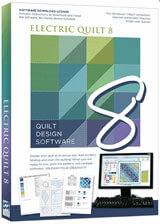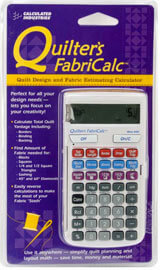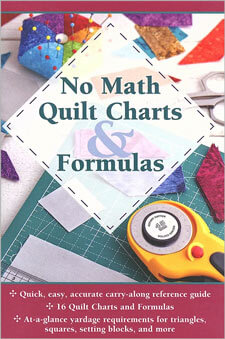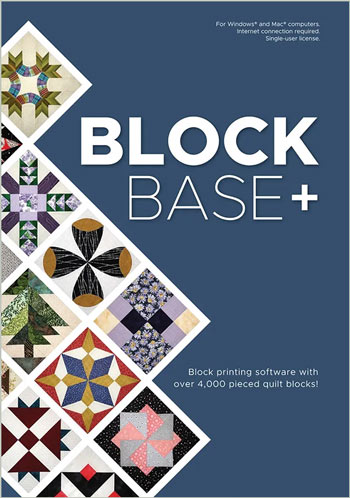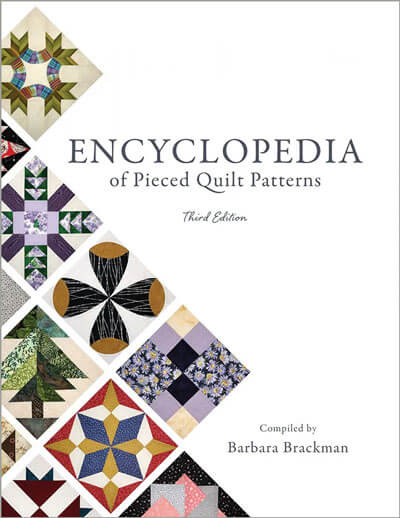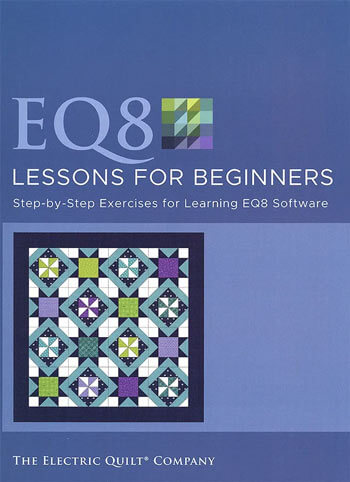- Home
- Quilt Design Inspiration
- City Streets Quilt Pattern
Design a City Streets quilt pattern: Simple ideas to inspire you!
This post contains affiliate links, for which I receive compensation.
Playing around with the City Streets quilt block yields designs that are anything but pedestrian!
In this article, you'll find 16 unique designs to help you strut your quilting stuff.
 The City Streets quilt block pattern
The City Streets quilt block patternTo make it a bit easier on your eyes, I remove all the drawing lines from the quilt pattern illustrations—no lines around the patches, no lines around the blocks.
Occasionally, it can be hard to find the actual City Streets block. Simply refer to it here at the top of the page to refresh your memory.
Each pattern is 5 blocks across and 6 down unless otherwise noted. And we do need to change that layout further down the page for reasons that will become obvious.
At the end of these City Streets quilt pattern ideas, you'll find links to several free resources on this website to help you with designing your own pattern with the City Streets block.
Edge-to-edge City Streets quilt pattern ideas
In this first example, we piece our City Streets together, edge-to-edge.
It's the unexpected pattern that forms at the corners of this simple type of setting that makes for fascinating patchwork designs.
Unfortunately, with these two ideas, you end up with what looks like a Churn Dash block surrounded by sashing.
Except, there is no sashing. The edges of these little beauties butt up right next to each other.
To be honest, if I actually wanted to make this pattern, I'd piece it from Churn Dash blocks. Easier to piece and no pressing instructions to worry about.
Remember, when designing quilts, just because you start with one block, doesn't mean that the resulting design needs to be pieced with that block.
Look for simplicity in piecing. The resulting quilt will be that much more fun to make...and finish!
This is a perfect example of why I remove the outlines from the quilt pattern variations.
We see the Churn Dash instantly. Alternative piecing ideas are easier to spot.
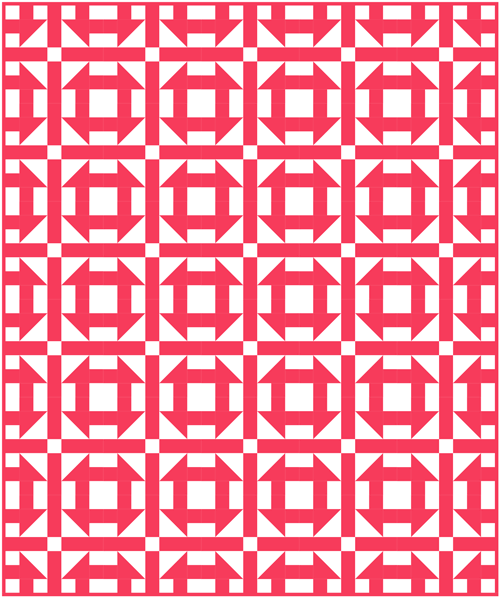 Straight set
Straight set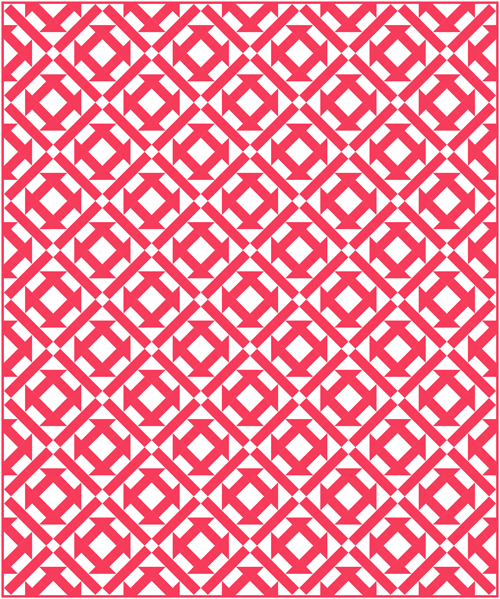 Diagonally set
Diagonally setAdd a simple sashing
In these designs, our City Streets have sashing and cornerstones in either a red sash/white cornerstone or white sash/red cornerstone. These are simply rectangles and squares cut from your fabric.
Easy to cut.
Easy to piece.
 Combo #1: red sashing/white cornerstones
Combo #1: red sashing/white cornerstones Combo #2: white sashing/red cornerstones
Combo #2: white sashing/red cornerstonesThe City Streets block pattern appears (yay!), though it's much easier to see with the white sashing of Combo #2.
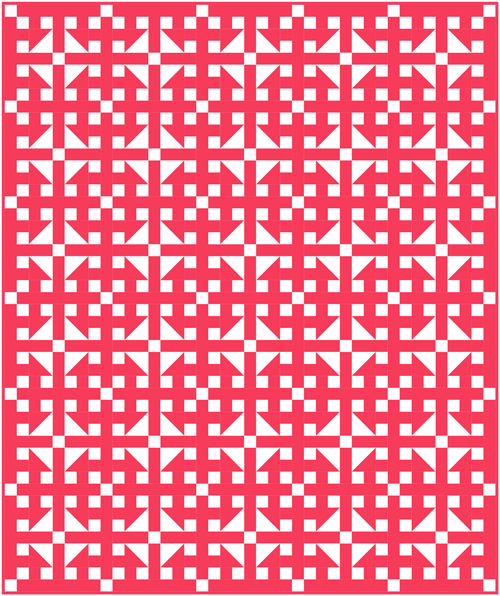 Combo #1
Combo #1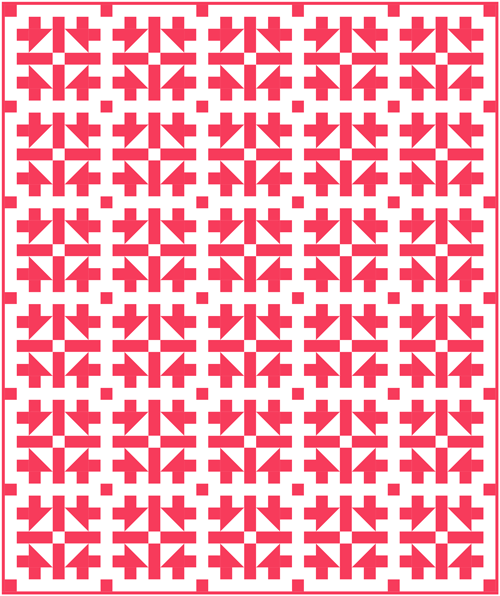 Combo #2
Combo #2Add the same sash/cornerstone combinations to our diagonal set.
Isn't it amazing how such simple elements so drastically change a patchwork pattern?
To top it off, It's so much easier to piece a quilt with these unpieced rectangles between the units. No extra seams to match, either.
No pressing instructions to revise.
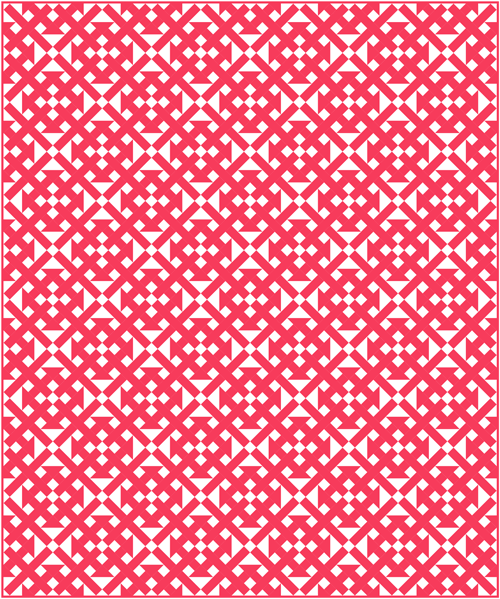 Combo #1
Combo #1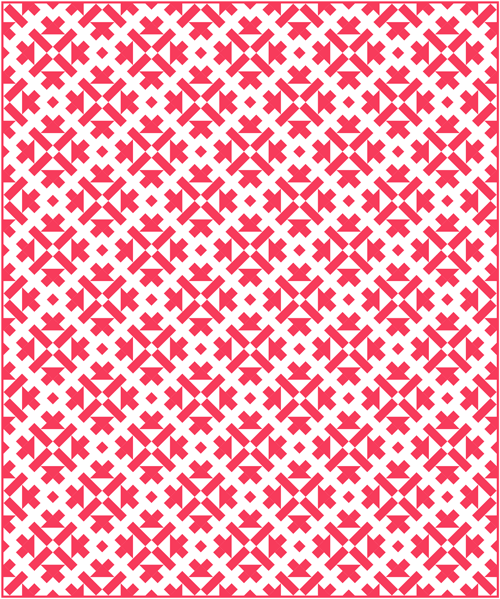 Combo #2
Combo #2Reduce the amount of piecing
Adding an alternate square cut from a solid piece of fabric reduces the number of City Streets you need to piece.
These spaces give you a place for some fancy quilting or embroidery—either by machine or by hand—or red work. Or perhaps a place to showcase a larger print.
You as the designer get to decide.
Solid alternate block is dominant
Start first with the solid alternate squares in the outside corners.
Again, the big difference the two sashing/cornerstone combinations make is rather unexpected.
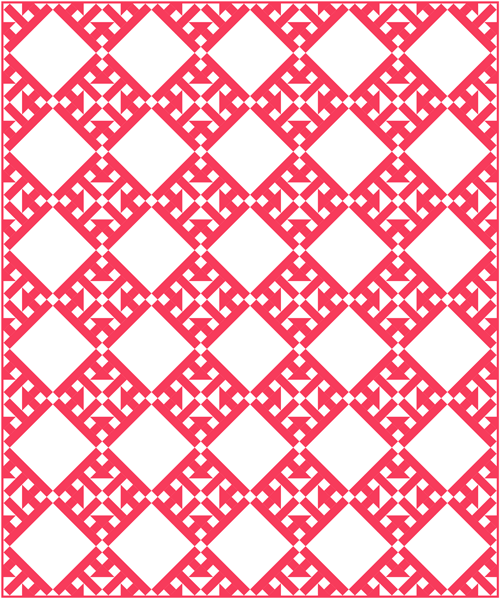
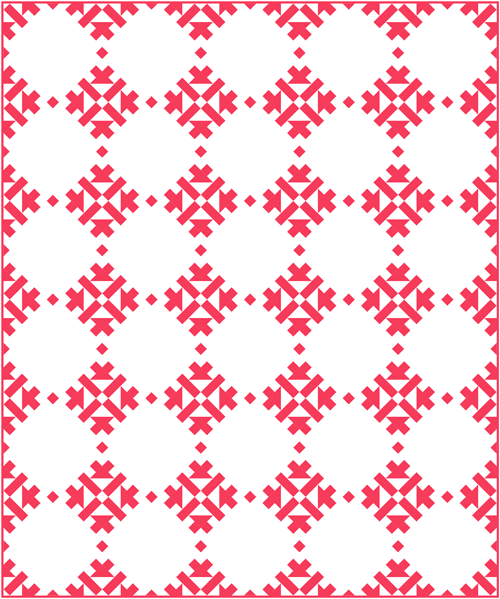
Pieced blocks are dominant
Switch to the pieced City Streets in the outside corners with the same sashing/cornerstones combinations.
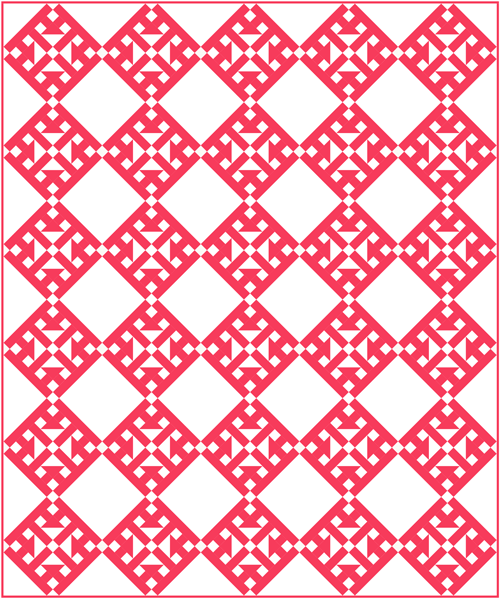
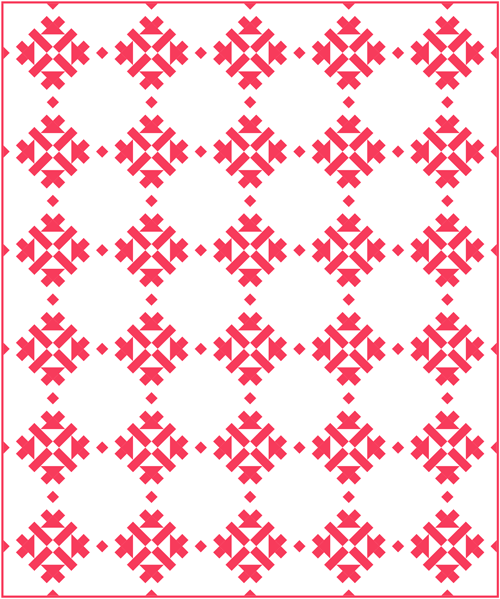
Up to this point, it hasn't mattered design-wise if there are even or odd numbers of blocks. The designs are nicely symmetrical.
But that's about to change. :)
Partial alternate squares
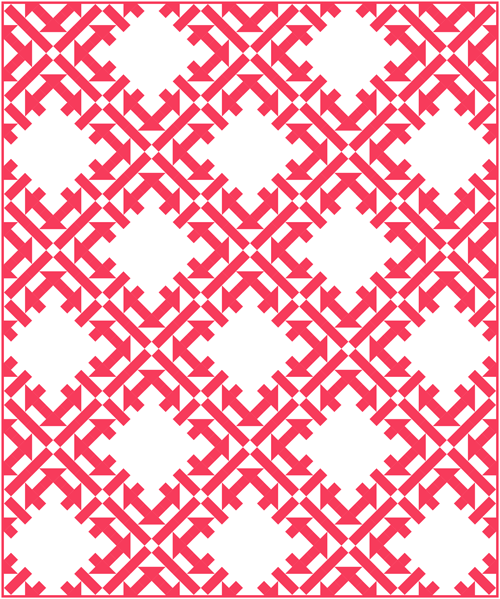 No sashing or cornerstones in this one.
No sashing or cornerstones in this one.Instead of using solid, alternate squares in alternating rows, in this example, we alternate the blocks in each row across. We won't use the sashing/cornerstones either.
If you're a fan of symmetrical designs, you can see the problem immediately.
In our 5×6 pattern, it is symmetrical side to side, but not top to bottom.
If you crave the symmetry, then make sure that each row and column contains an odd number of blocks, as shown below in our next ideas.
All the corners will match—either all pieced or all solids squares.
At first glance, these next two quilts look the same.
Did you spot the difference?
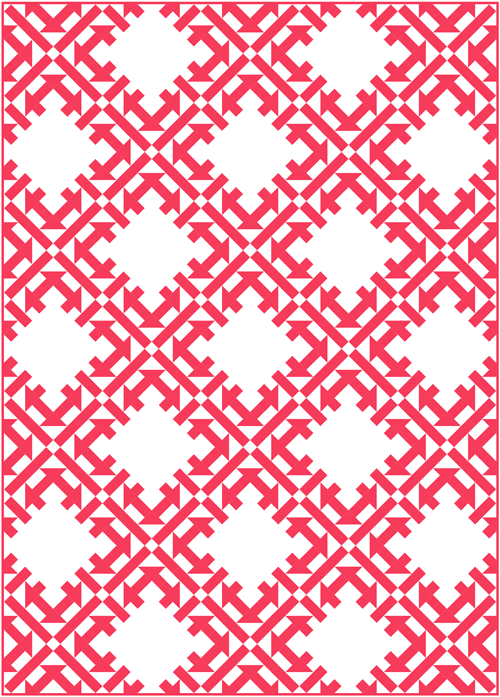
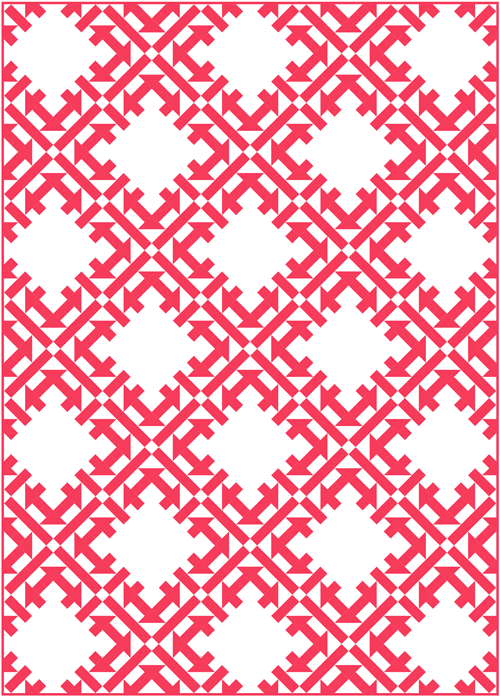
Need a clue? Look at the white squares.
Both these designs are intriguing. I'm tempted to make one, specifically the second one.
A good practice in any type of design work is to tweak a couple of more things before settling on the final pattern.
'They' say that success is 90% perspiration and 10% inspiration.
If that's true, after all these variations and tweaks we're about due for that last 10%, don't you think?
Add easy piecing to the alternate square
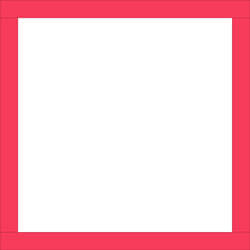
It doesn't take much time to tweak a pattern, especially when you're using Electric Quilt 8—my favorite tool for designing patchwork.
It doesn't get much simpler to swap different blocks and ideas in and out once you are familiar with the program.
While the lacy feel of this City Streets pattern layout is appealing, what if we defined those open squares a bit more?
To that end, this alternate block (that's nothing more than a Courthouse Steps with one round of logs) is what I've chosen to swap with the white squares.
The logs finish at 1/2 a grid unit. For a 7" finished City Streets block, that's ½", ¾" for a 10½" and 1" for a 14" finished blocks.
In the next two options, the pieced City Streets are in the corners (left) and framed alternate squares are in the corners (right), no sashings or cornerstones.
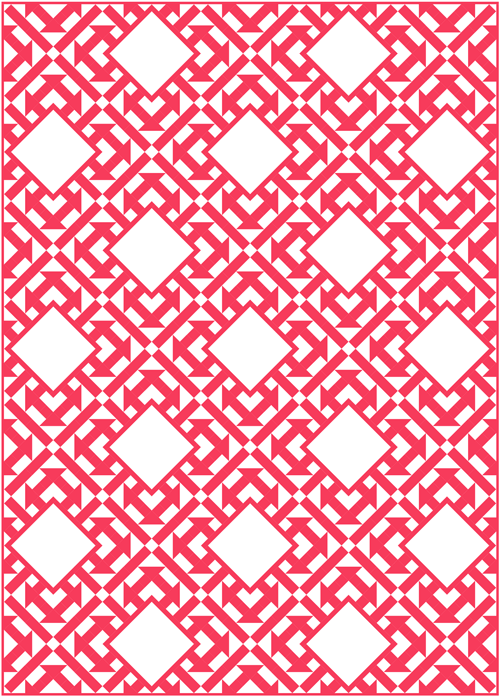
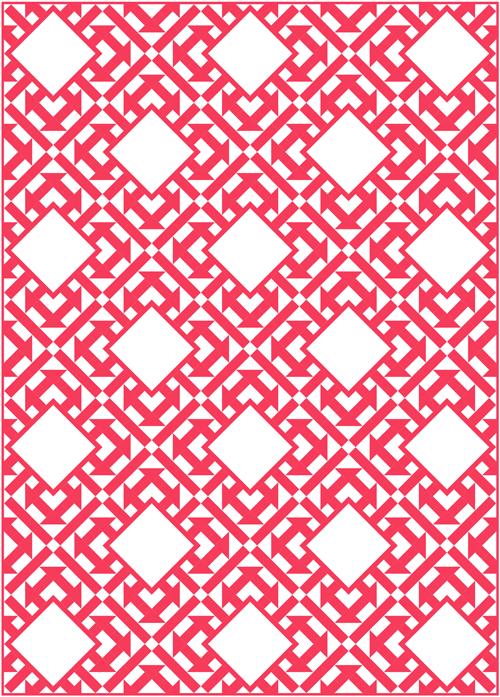
With the blocks set edge-to-edge, there'll be some monkeying around with the pressing directions to create seams that nest for easier seam matching. (Not my favorite thing to do...)
In these final renditions, the sashing/cornerstones are back.
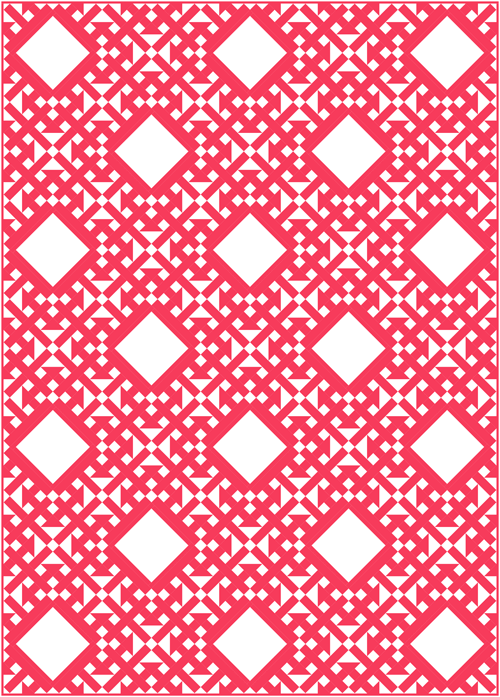 Combo #1
Combo #1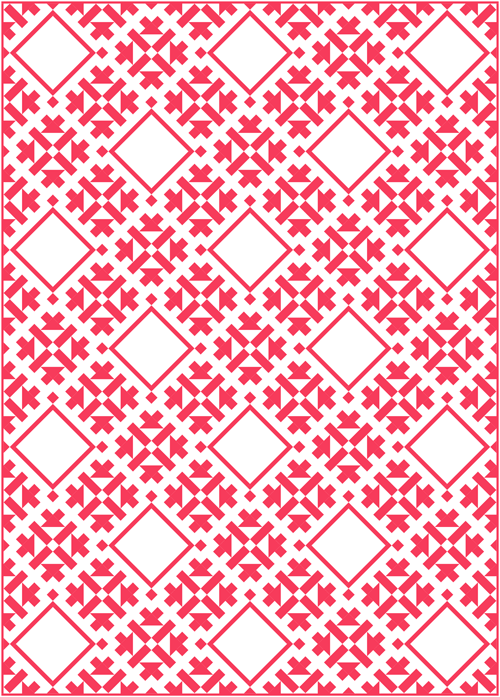 Combo #2
Combo #2Winner! Winner! Chicken Dinner!
I've got a quilting retreat in Lake Geneva, Wisconsin, at Pins and Needles. I think the last City Streets quilt pattern idea is what I'll be working on.
Watch this space for updates. :D
But wait...there's more for you!
If you've got an itchin' for some stitchin', you'll find several resources to download from this website to help get you started:
- The tutorial for the City Streets quilt block that includes downloads for the cutting chart and coloring/planning pages
- A download for 'How Many Blocks Do I Need' to print, links for the individual charts for Twin/Twin XL, Full/Double, Queen, King, and California King are at the bottom of the page
Tools to make quilt designing easier...
Click any image for more information, reviews, and pricing.
